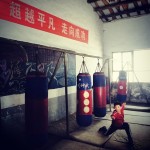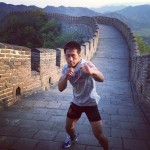I am in Hohhot, Inner Mongolia this weekend to watch the RUFF Superfight. RUFF is the number one mixed martial arts organization in China and this is their big bang: five champions will emerge out of tomorrow’s fights, the first belts given out by RUFF in their two year-history in China.
It’s a big deal for MMA in China and a big deal period. No other MMA organization has national champions and no other organization is so firmly entrenched in one country the way RUFF is in China. You could say that the only way MMA could thrive in China is by awarding national championship belts, but RUFF is by all accounts a serious MMA outfit with excellent quality control when it comes to fighters, safety, judging, and venues. So it doesn’t really matter whether or not RUFF’s deal with the Wushu Association (and by extension the government) stipulated national champs: tomorrows winners are bona fide MMA champs.
And that is the first step toward a bona fide MMA following in China, where martial arts has a long and storied tradition.
For me, the chance to watch an MMA fight live is great; I also have an inside track to the fighters, promoters and other people involved, and in terms of The Last Masters project … the rise of MMA and its relationship with Wushu and Kungfu is part of the story. Being here and talking with people and soaking up the atmosphere may help me get closer to answering questions like: What is the future of Chinese Martial Arts? What will survive and what will not?
What is the CMA scene like now? Where is it headed? How will MMA, Wushu and Kungfu develop (together? apart? or in competition with each other?) … Can a belief system co-exist with a sport? Are they mutually incompatible? Will we ever see kungfu as part of an MMA fighter’s repertoire? Is Sanda Kungfu?
I’ll keep you posted with what I see and hear, but it would be great if some readers posted a few questions or thoughts concerning the relationship between Mixed Martial Arts and Traditional Martial Arts …







